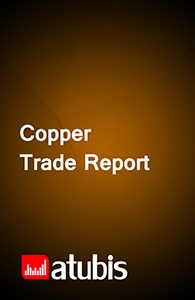Saudi Arabia’s Winding Wire Market Outlook Report
7,847€
- TRY: 365,000 ₺
Winding wire is part of the copper products supply chain, in the wire and cable category. Winding wire (usually with an enamel coating) is used in automotive, electronic and electromechanical equipment, home appliances, and lighting. As one of the early steps in the supply chain of wires and cables with metal conductors, metal wire rod is drawn into wires in different diameters, which are then coated with different insulations based on applications. The quality of the conductor and the enamel used in the production of winding wire significantly affects the end product; production technology also affects the quality of winding wire. In older technologies, annealing followed drawing, but in more recent technologies, the two processes are carried out simultaneously, saving time and costs.
Product Description
With a GDP of over $793 billion in 2019, Saudi Arabia was the largest economy in the region that year. The country’s economy, the second richest country in terms of natural resources, is heavily dependent on oil, its main natural resource. But since the introduction of the 2030 Vision in 2016, the country has determined to minimize oil reliance; it has made significant investments in downstream oil sectors, especially petrochemicals. Thus, with the development of energy-intensive industries like petrochemicals and the development and optimization of infrastructure, the wire and cable industry has grown significantly. As a result, the copper industry has been established in the country. However, with the absence of rich copper resources, developments have been limited. Copper production has mostly been justified with gold as a by-product.
Market drivers of Saudi Arabia’s winding wire
Given the wide range of applications for electric motors as one of the major consumers of winding wire, the winding wire market can be used to gauge the performance of a country’s manufacturing sector. The petrochemicals industry is one of the major consumers of electric motors in Saudi Arabia, which has had significant development over the recent years.
The increasing urbanization and the growing population will also drive winding wire demand as power demand increases. Turbines and generators, some major consumers of winding wire, are key determiners of winding wire demand.
Overview of Saudi Arabia’s winding wire market
With the relatively developed petrochemicals industry in Saudi Arabia, polymer coating, one of the important raw materials for winding wire, is easily available. This, along with the high added value of winding wire production, will drive developments in the industry. Currently, a significant portion of the country’s winding wire demand is met through imports. However, domestic output is expected to be ramped up as demand grows, reducing net imports.
Breakdown of Saudi Arabia’s winding wire market
Saudi Arabia’s winding wire market is broken down using three factors. In the first breakdown, winding wire is analyzed in terms of conductor type: copper and aluminum. Winding wire is also categorized based on cross section shape, including round and flat cross sections. Finally, a distinction is made based on end users, including power infrastructure, transportation, and durable goods.
Key players in Saudi Arabia’s winding wire market
- Alfanar Technical Services
- Al Ojaimi Industrial Group
Additional Information
| Industry | Wire and cable |
|---|---|
| Region | Saudi Arabia |
| Report Type | Industry Report |
Reasons to Buy
- Recognize the geographical distribution of import demand
- Identify the current and future key players of the trading market
- Achieve a better insight on potential target markets
- Understand the behavior of major suppliers/customers either globally or regionally
- Identify competitors as a feed for market analysis
Table of Content
- Executive summary
- Introduction
- Objective
- Market under study
- Product
- Product specifications
- Consumption structure
- Applications
- Physical properties
- Subjects discussed
- Geographical scope under study
- Study timeframe
- Study currency
- Potential audience
- Market dynamics
- Market drivers
- Restraints
- Opportunities
- Challenges
- Market overview
- Market size
- Industry capacities
- Existing capacities
- Capacity distribution
- Geographical distribution of capacities
- Future capacities
- Existing capacities
- Output
- Output trends
- Operating rates
- Consumption
- Consumption trend
- Consumption Share of domestic product
- Trade
- Exports
- Imports
- Trade balance
- Market balance
- Market breakdown by product type
- Market breakdown by product type
- Market breakdown by application
- Inventory
- Producers inventory
- Consumers inventory
- Traders inventory
- Market outlook
- Market factors
- Raw materials
- Costs and prices
- Competition
- The government
- Other factors
- Future scenarios
- Risks to forecast
- Market factors
- Consumer markets
- End-user markets
- Building construction
- Infrastructure construction
- Transportation manufacturing
- Industrial equipment manufacturing
- Durable goods manufacturing
- Consumable goods manufacturing
- Direct consumer markets
- Major Direct consumers
- Existing capacities
- Drivers
- Major Direct consumers
- End-user markets
- Export potentials
- Destinations
- Trade and insurance costs
- Import market suppliers
- Producers potential share
- Destinations
- Industry overview
- Raw materials
- The supply volume of raw materials
- Supply channels of raw materials
- Raw materials procurement costs
- Cost structure of producers
- Production cost curve
- Industry value added
- Generated new scrap
- Technology
- Raw materials
- Market landscape
- Domestic sales markets
- Pricing in the domestic market
- Potential domestic demand
- Trade agreements for imports
- Foreign suppliers
- Foreign sales market
- Prices
- Potential markets overview
- Trade agreements for exports
- Foreign customers
- Domestic sales markets
- Competitive landscape
- Producers
- Company profile
- Revenue structure
- Gross profit margins
- Capacity, output and sales
- Consumers
- Company profile
- Revenue structure
- Gross profit margins
- Capacity, output and sales
- Producers
- Market attractiveness
- Industry rivalry
- Threat of new entrants
- Threat of substitutes
- Bargaining power of buyers
- Bargaining power of suppliers
- Conclusion of Porter analysis
- PESTEL analysis
- Political factors
- Economic factors
- Social factors
- Technology factors
- Environmental factors
- Legal factors
- SWOT analysis
- Large-scale companies with favorable conditions
- Short-term strategies
- Long-term strategies
- Large-scale companies with unfavorable conditions
- Short-term strategies
- Long-term strategies
- Small enterprises with favorable conditions
- Short-term strategies
- Long-term strategies
- Small enterprises with unfavorable conditions
- Short-term strategies
- Long-term strategies
- Large-scale companies with favorable conditions
List of Figures
- Output and consumption; 2010-2019
- Market share of product applications; 2019
- Market surplus; 2019-2025
- Production process flowchart
- Market size; 2010-2025
- Existing capacity; 2010-2019
- Capacity distribution; 2019
- Geographic distribution of capacities; 2019
- Development of future capacity; 2010-2025
- Amount of output; 2010-2025
- Operating rates of production plants; 2010-2025
- Amount of consumption; 2010-2025
- Consumption share of domestic product; 2010-2025
- Exports of product; 2010-2019
- Imports of product; 2010-2019
- Historical trade balance; 2010-2019
- Future Market balance; 2020-2025
- Market output breakdown by alloy type; 2010-2025
- Market consumption breakdown by alloy type; 2010-2025
- Market balance breakdown by alloy type; 2010-2025
- Market output breakdown by product type; 2010-2025
- Market consumption breakdown by product type; 2010-2025
- Market balance breakdown by product type; 2010-2025
- Market consumption breakdown by application; 2010-2025
- Inventories of raw materials and products at producers factories; 2010-2019
- Consumers’ inventory of product; 2010-2019
- Traders’ inventory; 2010-2019
- Production forecast, according to raw materials and sales analysis; 2019-2025
- Market surplus; 2019-2025
- The share of end-user industries in the consumption; 2010 and 2019
- Changes in the end-consumption of extrusion products; 2019 vs 2025
- Applications in building construction industry; 2019
- Applications in infrastructure construction industry; 2019
- Applications in transportation manufacturing industry; 2019
- Applications in industrial equipment manufacturing industry; 2019
- Applications in durable goods manufacturing industry; 2019
- Applications in consumable goods manufacturing industry; 2019
- Capacity distribution structure of direct consumers; 2019
- Existing capacities of direct consumers in each province; 2019
- Suppliers of the export potential destination; 2019
- Historical exports to the export potential destination and future potential; 2016-2025
- Up-stream domestic supply; 2010-2019
- Raw materials domestic supply; 2010-2019
- Supply channels of producer plants
- Spot price of raw material in the market; 2010-2025
- Cash cost structure for production the product; 2019
- Production cost curve of the plants; 2019
- Gross value added of the industry; 2010-2019
- Generated new scrap; 2010-2019
- Sales channels
- Realized price of the product in the market; 2010-2025
- Potential demand of each province; 2019
- The main foreign suppliers to the market; 2010-2019
- FOB price vs domestic market; 2010-2025
- Map of global major importers > 20,000t; 2019
- Major foreign customers; 2010-2019
- Revenue structure of the producers; FY2019
- Sales income and gross profit margin of the producers; FY2010-2019
- Output and sales of the producers; FY2010-2019
- Revenue structure of the consumers; FY2019
- Sales income and gross profit margin of the consumers; FY2010-2019
- Output and sales of the consumers; FY2010-2019
- SWOT matrix for large-scale companies with favorable conditions
- Strategies positioning for large-scale companies with favorable conditions
- SWOT matrix for large-scale companies with unfavorable conditions
- Strategies positioning for large-scale companies with unfavorable conditions
- SWOT matrix for small enterprises with favorable conditions
- Strategies positioning for small enterprises with favorable conditions
- SWOT matrix for small enterprises with unfavorable conditions
- Strategies positioning for small enterprises with unfavorable conditions



